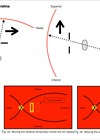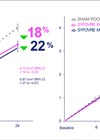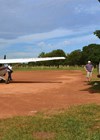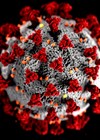Ophthalmology
Navigating the retina: the nitty-gritty of slit-lamp fundus examination
The slit-lamp fundus examination can be a difficult and disorientating task for beginners due to the retina being viewed in a non-anatomical orientation, the small area of retina illuminated, and the counterintuitive technique of the examination. This article provides a...
How effective is nurse-led telephone preassessment for cataract surgery?
Cataract surgery is the most frequently performed surgical procedure in the UK [1]. The demand for cataract surgery is projected to increase with ageing population, and the recent pandemic has further contributed to the extended waiting times in the UK....
My top five: Elective grants for an ophthalmology elective for a medical student surviving in a cost-of-living crisis
In a time where cost of living is significantly increasing, and the student NHS bursary is remaining stagnant, funding a medical elective is becoming increasingly more challenging for medical students. Surveys have shown that medical students typically get two to...
The last three patients: general medicine (Patient Two)
For the second reflection in this series (see Patient One here), Professor Jonathan Rees recounts his experiences of the last patient he saw as a medical registrar, telling the tragic story of a young man’s death and the risks that...
Simulating the visual impairment symptoms of age-related macular degeneration in virtual reality
A new virtual reality application visually simulates age-related macular degeneration and demonstrates its progression over time including some Charles Bonnet syndrome hallucinations. Introduction Age-related macular degeneration (AMD) is the leading cause of blindness in developed countries with the prevalence of...
Emerging therapies for geographic atrophy: complement inhibitors show potential to slow progression and preserve RPE and photoreceptor integrity
Geographic atrophy (GA) is an advanced form of age-related macular degeneration (AMD) characterised by progressive, irreversible loss of the retinal pigment epithelium (RPE) and photoreceptors and is estimated to account for approximately 10% of AMD-related blindness [1-4]. The Age-Related Eye...
Beyond 2020 Episodes 01-03
Introduction Working in remote, Amazonian villages, the Andean Medical Mission (AMM) have made progress into eliminating avoidable blindness in this small corner of the globe and have produced a video series, Beyond 2020, to share what they’ve learned over 12...
Getting the Duke Elder examination right: reflections and tips from a medical student
The Duke Elder undergraduate prize examination is an annual exam organised by the Royal College of Ophthalmologists in the United Kingdom. Named after Sir Stewart Duke Elder, a prominent British ophthalmologist, the exam is designed to encourage undergraduate medical students...
Effect of the COVID-19 Urgent Eyecare Service on patient referrals to general practitioners and Hospital Eye Service
The COVID-19 Urgent Eyecare Services (CUES) was developed to relieve the demands of hospital ophthalmology, aiming to allow patients to have remote consultations and be managed by community optometric practice. This was because access to Hospital Eye Service (HES) Ophthalmic...
ChatGPT cannot pass FRCOphth examinations: implications for ophthalmology and large language model artificial intelligence
Large language models are generating a lot of hype for artificial intelligence, but can they assist patients and practitioners in ophthalmology? Introduction Deep learning (DL) has emerged in ophthalmology as an exciting form of artificial intelligence (AI) most commonly applied...
Artificial intelligence in eyecare: how do we ensure new technologies truly benefit our patients?
From monitoring patients with heart disease to improving the early diagnosis of cancer, artificial intelligence (AI) using deep learning techniques is already employed in many different healthcare specialties [1]. In the eyecare field, AI technologies have been used to analyse...
Real world data of post-IVT endophthalmitis, from a nurse-delivered intravitreal injection service
Introduction Intravitreal injection of neutralising anti-vascular endothelial growth factor (VEGF) antibody was licenced more than a decade ago, and over the years there has been proportionate increase in the number of intravitreal injections [1]. Injection of a therapeutic agent through...















